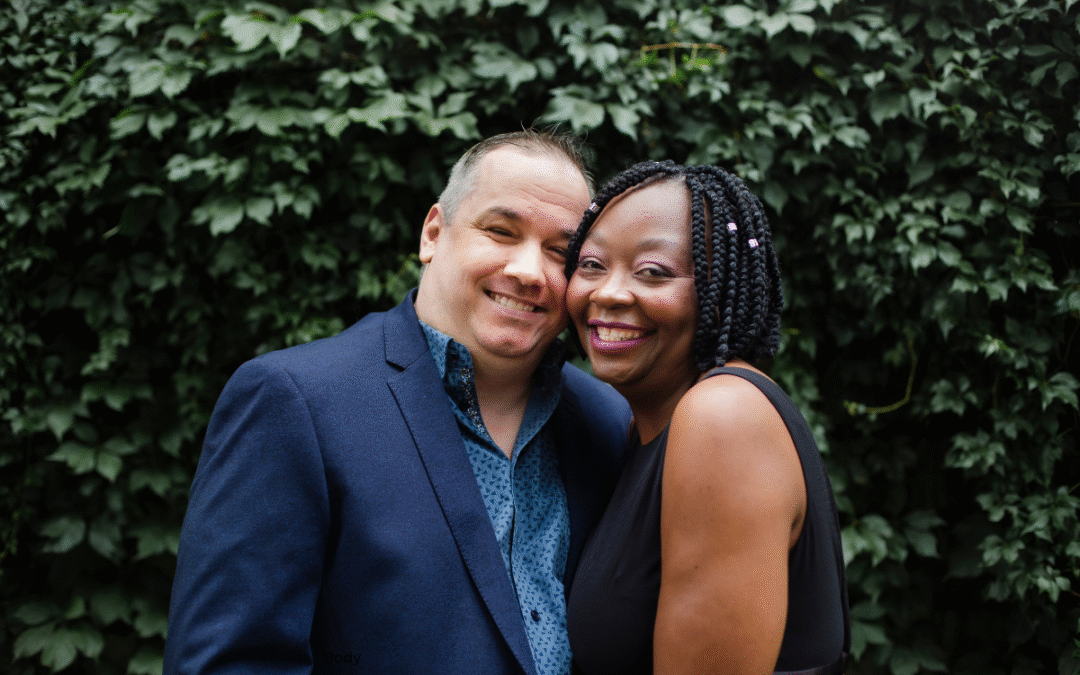
Trauma-Informed Couples Therapy at Maplewood Counseling
Trauma-Informed Couples Care at Maplewood Counseling
Reviewed by Debra Feinberg LCSW and Robert Jenkins LCSW at Maplewood Counseling

When past trauma impacts a relationship, it can feel like an invisible barrier, creating distance and misunderstanding even when you both want to be closer. You may find yourselves stuck in cycles of conflict or emotional withdrawal, where one or both partners are reacting to painful memories without even realizing it. At Maplewood Counseling, we understand that these experiences require a special kind of care, one that recognizes the deep impact of trauma on individuals and partnerships.
Our approach to trauma-informed couples care is built on a foundation of safety, empathy, and respect. We provide a space where you and your partner can navigate these sensitive issues together, turning challenges into opportunities for profound healing and connection. Our goal is not just to manage symptoms but to help you build a relationship where both partners feel secure, understood, and truly seen.
Creating a Foundation of Safety
The first and most important principle of trauma-informed care is safety. For healing to begin, both partners must feel physically and emotionally secure. We know that discussing past trauma can be incredibly vulnerable, and our therapists are trained to create a non-judgmental environment where you can feel safe to share your experiences.
We establish safety by:
- Setting Clear Boundaries: We work with you to establish clear guidelines for communication during sessions, ensuring that conversations remain respectful and productive.
- Honoring Your Pace: You are always in control of what you share and when. There is no pressure to disclose anything before you feel ready.
- Building Trust: Our therapists prioritize building a trusting, collaborative relationship with both of you, acting as a stable and reliable guide on your journey.
Feeling safe allows your nervous systems to relax, making it possible to engage in the therapeutic process without feeling overwhelmed. It is the bedrock upon which all other healing work is built.
The Importance of Pacing
Healing from trauma is a marathon, not a sprint. Rushing the process can often do more harm than good, leading to re-traumatization and burnout. That’s why pacing is a central element of our trauma-informed couples care. We move at a speed that feels manageable and right for you.
Pacing involves carefully managing the flow of therapy to prevent emotional flooding. A therapist skilled in trauma care will help you touch upon difficult memories or emotions for short periods before guiding you back to a place of stability and calm. This gentle, measured approach ensures that the work remains productive and empowering rather than overwhelming. By honoring your unique rhythm of healing, we help you build resilience and confidence one step at a time.
Using Titration for Gentle Processing
Titration is a technique used in trauma therapy to process difficult experiences in small, digestible amounts. Think of it like adding a single drop of a powerful substance into a large volume of water—the essence is there, but its intensity is diluted, making it much easier to handle.
In a session, this might look like:
- Briefly exploring a challenging memory or feeling.
- Pausing to notice the sensations in your body.
- Focusing on resources that help you feel grounded and calm.
This method allows you to process trauma without becoming overwhelmed by it. For couples, titration helps you both stay present and connected, even when discussing painful subjects. It transforms therapy from a potentially scary experience into a series of manageable steps toward healing, strengthening your ability to support each other along the way.
Begin Your Journey to Healing Together
Navigating the effects of trauma within a relationship can be one of the most difficult challenges a couple can face, but you do not have to do it alone. Maplewood Counseling offers a compassionate, trauma-informed approach that honors your experiences and empowers your partnership. Our methods, centered on safety, pacing, and titration, are designed to create a secure path toward healing and connection.
If you are ready to build a stronger, more resilient future together, we invite you to take the next step. Contact us today to learn more about our in-person and virtual couples counseling sessions and to schedule a consultation.
Frequently Asked Questions
What if my partner is hesitant to talk about trauma?
This is a very common and understandable concern. Our therapists are skilled at creating a balanced and supportive environment where both partners feel secure. We never force disclosure and will work with you to build trust at a pace that feels comfortable for everyone. The focus is on strengthening the relationship, not just on the trauma itself.
Will we have to relive painful memories over and over?
No. The goal of trauma-informed care is healing, not re-traumatization. We use gentle techniques like pacing and titration to ensure you are never overwhelmed. This means we only touch on difficult material in small, manageable doses before guiding you back to a feeling of safety and calm. You are always in control of the process.
How is trauma-informed couples care different from regular couples counseling?
While regular couples counseling is effective for many issues, trauma-informed care adds a crucial layer of understanding about how past trauma affects the nervous system, behavior, and relationship dynamics. It specifically incorporates principles of safety, pacing, and titration to help couples navigate the unique challenges that arise when one or both partners have experienced trauma.
How long does trauma-informed therapy take?
The duration of therapy is unique to every couple. Because we honor your individual pace, there is no set timeline. Our focus is on sustainable healing and building a resilient foundation for your relationship, however long that takes. We will regularly check in with you to ensure the process feels right and is meeting your needs.
Begin Your Journey to Healing Together
Navigating the effects of trauma within a relationship can be one of the most difficult challenges a couple can face, but you do not have to do it alone. Maplewood Counseling offers a compassionate, trauma-informed approach that honors your experiences and empowers your partnership. Our methods, centered on safety, pacing, and titration, are designed to create a secure path toward healing and connection.
If you are ready to build a stronger, more resilient future together, we invite you to take the next step. Contact us today to learn more about our in-person and virtual couples counseling sessions and to schedule a consultation.
Interfaith and Interracial Relationship Resources
-
Navigating Cultural Differences in Interfaith Relationships
Explore how to honor both faiths in your relationship while building a strong, united partnership. Includes actionable tips and real-life examples. -
Building Bridges in Interracial Relationships
Learn how to navigate cultural differences and external pressures in interracial relationships with empathy and understanding. -
Communication Tips for Culturally Diverse Couples
Overcome communication barriers rooted in cultural differences with practical advice and tools for deeper connection. -
Creating a Shared Vision for Interfaith and Interracial Families
Discover how to align on values, traditions, and goals to build a unified family culture that celebrates your unique backgrounds. -
How Therapy Can Support Interfaith and Interracial Couples
Understand how therapy can help couples navigate cultural and religious differences, improve communication, and strengthen their bond.









